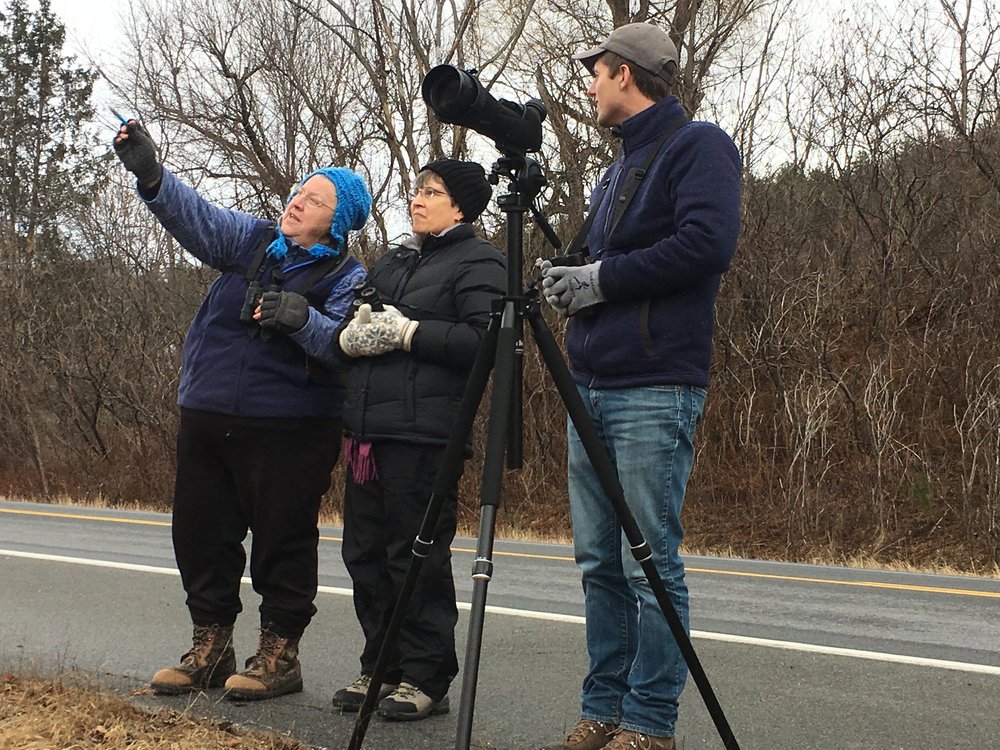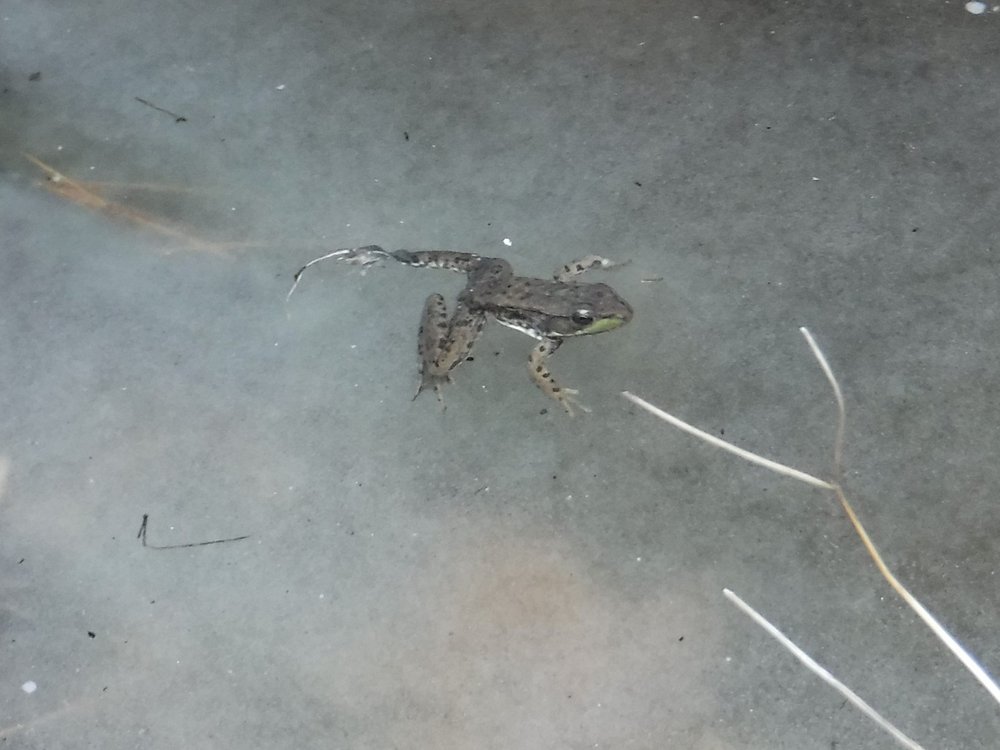
A total of 48 birders, consisting of eight field teams and 12 feeder watchers, tallied 46 species. Two additional species, great blue heron and peregrine falcon, were sighted during Count Week (the three days before count day and three days following when species not seen on count day may be included in the tally).
The day started in the low 40s and was mostly cloudy, and ended in the low 30s, with some light rain and snow, but virtually no snow cover. Whether this is what affected the lower number of birds is hard to tell. Although this is time of year when the lowest number of species is expected, most of the field teams and feeder watchers noted exceptionally low activity.
Our average count for the past 10 years is 51 species with a high count of 58 in 2011 and a low count of 43 in 2009.
 Bohemian WaxwingsWe had several new participants this year with two coming from as far away as Georgia. Two teams had seven participants and two teams achieved 35 species for their areas. And more territory was covered on foot this year. There were a few new feeder watchers and they did an excellent job, including one who had the dubious privilege of counting the American crows as they came in to their evening roost.
Bohemian WaxwingsWe had several new participants this year with two coming from as far away as Georgia. Two teams had seven participants and two teams achieved 35 species for their areas. And more territory was covered on foot this year. There were a few new feeder watchers and they did an excellent job, including one who had the dubious privilege of counting the American crows as they came in to their evening roost.
But there were highlights despite low species numbers!
Several bird species have irrupted from the north this season. An irruption is defined as a “dramatic, irregular migration of large numbers of birds,” usually in response to food supply. Two of these species were observed on the count: pine grosbeak seen by three field teams and Bohemian waxwings by two teams. Hopefully we will see more of them as the winter progresses. Ornamental crabapples are the place to look for these.
Two other irruptive species being seen in Vermont this season were not recorded on our count – common redpolls and evening grosbeaks. The pine siskins seen this fall seem to have moved on.
Two new species had a record high of individuals for the count: eastern bluebirds, with 51 observed, and 14 red-bellied woodpeckers, a species that has been increasing rapidly in the state over the past 15 years or so.
There were some unusual species that were not new, but are never guaranteed. Two Wilson’s snipe were spotted along Otter Creek by the same team that also saw a winter wren.
 MerlinOverall raptor numbers were low, 22 red-tailed hawks were spotted, about half our high which occurred in 2017. Three sharp-shinned hawks and five Cooper’s hawks were seen, contrasting with a high of nine in 1995 and eight in 2015 and 2016, respectively. Only one barred owl was noted. Two of the ever-increasing bald eagles were seen. A photo of one raptor, originally thought to be a kestrel seen in poor light, turned out to be a merlin. No other raptors, other than these and the count week peregrine falcon, were observed.
MerlinOverall raptor numbers were low, 22 red-tailed hawks were spotted, about half our high which occurred in 2017. Three sharp-shinned hawks and five Cooper’s hawks were seen, contrasting with a high of nine in 1995 and eight in 2015 and 2016, respectively. Only one barred owl was noted. Two of the ever-increasing bald eagles were seen. A photo of one raptor, originally thought to be a kestrel seen in poor light, turned out to be a merlin. No other raptors, other than these and the count week peregrine falcon, were observed.
Some misses included no belted kingfishers, despite all the open water; no-snow no-show snow buntings; and no golden-crowned kinglets.
 On a non-avian note, a green frog was seen at Rocky Pond at Pine Hill Park in Rutland and reported to the Vermont Reptile and Amphibian Atlas.
On a non-avian note, a green frog was seen at Rocky Pond at Pine Hill Park in Rutland and reported to the Vermont Reptile and Amphibian Atlas.
Of course, the highlight of the count is the potluck supper where we countdown the day’s results and enjoy everyone’s best potluck contribution. We had a high number of birders attend the supper – 35! Although bird numbers were down, spirits were high!
Thanks to Kathleen Guinness for organizing a successful count! It’s a lot of work, but it comes together year after year.
Species List:
Mallard